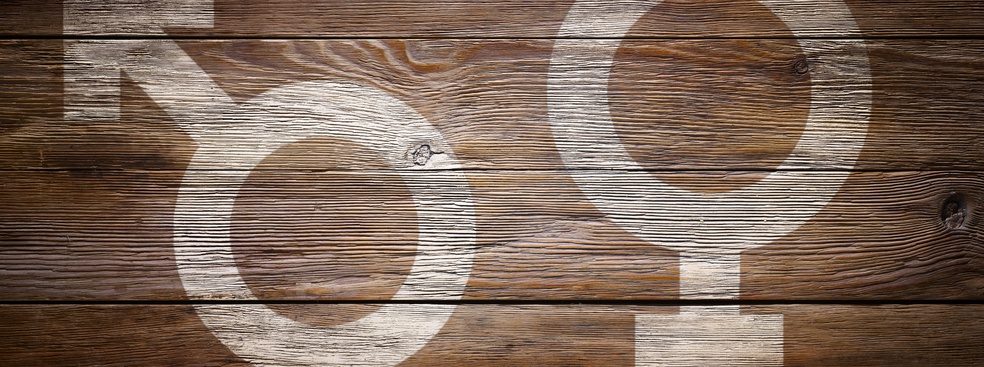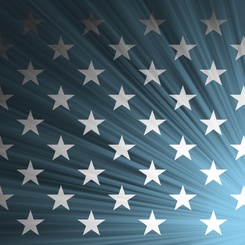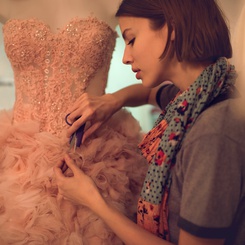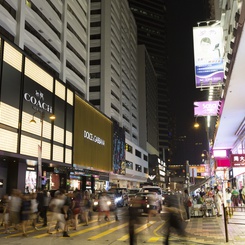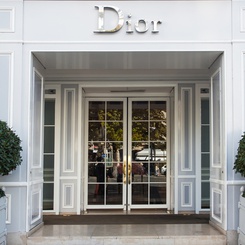Raphaëlle Butori, Professor of Marketing at ESSEC Business School, shares her research on how our behavior and self-conception are affected when faced with a member of the opposite sex. From the research paper The impact of visual exposure to a physically attractive other on self-presentation by Prof. Raphaëlle Butori and Béatrice Parguel, Researcher, CNRS.
One of the most long-lasting enigmas humankind has asked itself over the millennia is that of the mysteries of male and female behavior. We still strive, after Shakespeare’s sonnets, John Gray’s Men are from Mars, Women are from Venus, and old adages about not judging books by their covers, to understand. And indeed, we are not so different from the psychologists and marketing experts in that respect.
Basic Instinct: stranger than fiction
In recent years, a growing amount of research has focused on using evolutionary psychology to study why and how people consume. One conclusion is that shaped by hundreds of thousands of years of survival and reproductive pressures, men and women seek different characteristics in potential mates because they invest different types of resources in their offspring: women invest physiological resources through gestation or lactation; men invest more indirect material resources such as shelter and protection. Basically, this means that – you’ve guessed it – women seek mate qualities related to wealth, social status and protection, whereas men – you’ve guessed it too – seek qualities reflecting fertility and health – for example youth and physical attractiveness.
James Roney, now professor at UCSB, carried out initial research and experimentation on this basis to show that simply looking at a picture of young women considered as highly attractive triggers men to begin to act and believe in a way that fits with what they consider to be female mate preferences. Exposed to magazine advertisements containing photos of attractive young women, men displayed more favorable attitudes towards material wealth, greater momentary feelings of ambition and aggressiveness, and a higher rate of extravert behavior than those men who were given magazines containing photos of – not very flattering for some of us – older women.
Such studies have led to marketing experts looking into how to explicitly activate such reactions in a consumer context. Just think of all the chocolate, car, watch and food adverts that serve us up a desirable romantic encounter or even, more perversely, a situation where we’re led to imagine that a rival was flirting with our partner – something that makes men turn nasty and want to keep their steak and eat it too. The results conclude that these two scenarios respectively increase women’s and men’s willingness to spend on luxury products.
Adding a little mischief to the potion
Prof. Butori’s recent research builds on that of Roney and goes further still. She used an online survey whose fictional researcher varied in gender and attractiveness while keeping them within a same age bracket. Altogether, 256 respondents were recruited and randomly subjected to a photo of a physically attractive or unattractive researcher on the home page and headers of the survey. Importantly, the experiment was implicit in the sense that participants were not asked to think of the exercise as a mating context.
Several hypotheses were raised and put to the test: firstly that the traits women prefer in men are linked to the striving for mastery and power – something called the pursuit of agency; and secondly that the traits that men prefer to see in a woman are linked to the pursuit of communion – that is, social relationships, the ability to bond with others and build harmonious affinities. As such, we could expect men exposed to attractive women to switch instinctively to warrior mode and show off their heavy-duty aptitudes and preferences for mastery and power rather than natter about how good they are at fostering harmonious links with others.
The potion thickens. Because an attractive woman is a potential mate for men, she is therefore a potential rival for other women. And because – much like a man – she also likes to have her cake and eat it too, this would give rise to competition and an activation of instinctive mating goals. As such, a woman exposed to another, attractive, woman – a competitor – would therefore be expected to show a greater inclination to adopt those characteristics that men seek in women and most naturally become the most convivial, sociable, charming and witty human being ever – if only for the length of time the rival stays in sight.
How about a little bit of survival instinct?
Prof. Butori’s research results strengthen Roney’s previous studies. The mere visual perception of a potential mate for men – a physically attractive woman – seems to trigger a psychological readiness in men towards mate attraction and its associated behavior. When exposed to an attractive female researcher, men took on traits consistent with what women seek in a romantic partner – higher levels of attitude and behavior linked to dominance, mastery and power and lower levels of feelings for creating harmonious links with others.
But the work also adds to previous research in the sense that women also respond to the physical attractiveness of other women. When faced with an attractive woman – indeed a potential rival – they will take on behaviors which ensure the continued existence of their romantic relationship – that is, the adoption of traits in line with building social and harmonious relationships.
But what about beauty and what really counts – money? The problem is that physical attractiveness does not tell us much about how wealthy or not a person is – supposedly what women expect in a mate. An attractive man, then, is neither necessarily a potential mate for a woman nor a potential rival for men. Indeed, both sexes seem to be insensitive to male physical attractiveness, a good-looking guy neither activating mating goals nor causing changes in self-conception.
What does all this mean? To come back to the beginning of things, there is certainly an element of survival instinct in all this. And rightly so: the relatively young homo sapiens that we are – a mere one to two hundred thousand years old in the context of the six million since homo erectus first stepped across the grassy plains – would probably have died out if not. It also points to the conclusion that, however much our nicer selves do not wish to ‘judge a book by its cover’ – we do. What we see in terms of human beauty primes a set of behaviors linked to mating instincts and changes, albeit momentarily, our self-conception of whom we are. This can be used by marketers to orient potential buyers towards the kill – the purchase. On a practical level, Prof. Butori’s results are important in the context of leading market research: for when surveys and questionnaires involve a female interviewer, the data collected just might be distorted by the inherent sexual desirability instinct we have within us. So the next time you pick up on a book and gaze at the cover, you might just want to leave that vague feeling of guilt aside and tell yourself that it’s not what we are, it’s the way that we’re primed see it.
Useful links:
 Principes de Marketing. (with E. Le Nagard, T. Lardinoit, D. Dion, F. Oble). Paris (France) : Pearson, 2016
Principes de Marketing. (with E. Le Nagard, T. Lardinoit, D. Dion, F. Oble). Paris (France) : Pearson, 2016  "Because I'm worth it: The impact of given versus perceived status on preferential treatment effectiveness" (R. Butori, V. Pez, G. De Kerviler), Journal of Business Research, Jun 2015, Vol. 68, Issue 2, p. 2477‑2483
"Because I'm worth it: The impact of given versus perceived status on preferential treatment effectiveness" (R. Butori, V. Pez, G. De Kerviler), Journal of Business Research, Jun 2015, Vol. 68, Issue 2, p. 2477‑2483  "The impact of visual exposure to a physically attractive other on self-presentation" (R. Butori, B. Parguel), International journal of research in marketing, Dec 2014, Vol. 31, Issue 4, p. 445‑447
"The impact of visual exposure to a physically attractive other on self-presentation" (R. Butori, B. Parguel), International journal of research in marketing, Dec 2014, Vol. 31, Issue 4, p. 445‑447  "How national culture impacts teenage shopping behavior: Comparing French and American consumers" (E. Gentina, R. Butori, G. Rose, A. Bakir), Journal of Business Research, Apr 2014, Vol. 67, Issue 4, p. 464‑470
"How national culture impacts teenage shopping behavior: Comparing French and American consumers" (E. Gentina, R. Butori, G. Rose, A. Bakir), Journal of Business Research, Apr 2014, Vol. 67, Issue 4, p. 464‑470  "Unique but integrated: The role of individuation and assimilation processes in teen opinion leadership" (E. Gentina, R. Butori, T. Heath, ), Journal of Business Research, Feb 2014, Vol. 67, Issue 2, p. 83‑91
"Unique but integrated: The role of individuation and assimilation processes in teen opinion leadership" (E. Gentina, R. Butori, T. Heath, ), Journal of Business Research, Feb 2014, Vol. 67, Issue 2, p. 83‑91  "So You Want to Delight Your Customers: The Perils of Ignoring Heterogeneity in Customer Evaluations of Discretionary Preferential Treatments" (R. Butori, A. De Bruyn), International Journal of Research in Marketing, Dec 2013, Vol. 30, Issue 4, p. 358‑367
"So You Want to Delight Your Customers: The Perils of Ignoring Heterogeneity in Customer Evaluations of Discretionary Preferential Treatments" (R. Butori, A. De Bruyn), International Journal of Research in Marketing, Dec 2013, Vol. 30, Issue 4, p. 358‑367
